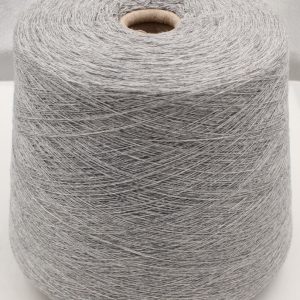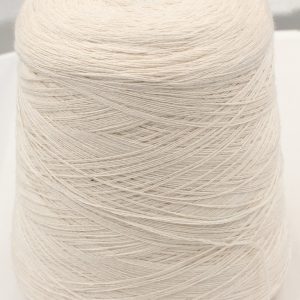The humidity contained in the yarns
 All textile fibers show, to varying degrees, the tendency to absorb humidity from the environment in which they are found. The determination of the moisture content of textile fibers constitutes a parameter of prevalent commercial importance. Wool fibre, for example, can absorb up to 30% by weight of water without showing any variation to the touch compared to the fiber in conditions of hygrometric equilibrium.
All textile fibers show, to varying degrees, the tendency to absorb humidity from the environment in which they are found. The determination of the moisture content of textile fibers constitutes a parameter of prevalent commercial importance. Wool fibre, for example, can absorb up to 30% by weight of water without showing any variation to the touch compared to the fiber in conditions of hygrometric equilibrium.
It appears clear that in a commercial transaction of a quantity of hygroscopic textile fiber (all fibers in general), the mass of the material found by simply weighing the material cannot represent the “commercial weight” which must be subject to the economic quotation.
There are many factors that affect the humidity of the yarn, including the temperature and the degree of internal and external humidity of the rooms in which they are stored. The yarns can decrease or increase in weight based on the moisture they have absorbed or lost, even during transport from the supplier to the customer. In winter the yarn will have a significant, but not excessive, increase in weight, whereas in summer when the temperature is warmer and the climate is drier.
A package of yarn can vary by 2, 3 or even 5% in weight from one day to the next based on the change in the humidity level of the air in the place where it is stored.
For the stain removal of pure Cashmere yarns it is very important that the processing takes place in an environment with controlled temperature and humidity. When temperature and humidity are not controlled in the working environment, a high number of breakages can occur, to the point of compromising the success of stain removal.
The physical and mechanical characteristics of textile fibers are various, such as fineness, thermal stability, feltability, insulation, tenacity, elongation and breakage, elasticity resistance, etc.
Among these, the hygroscopicity of the textile material is very important.
Hygroscopicity is the ability of a textile fiber to absorb humidity from the environment.
Natural fibers especially have a certain degree (percentage) of humidity.
It is measured based on the maximum percentage of water that the fiber can absorb without appearing wet.
Wool and alginic fibers are the most hygroscopic.
For example, wool can absorb up to 33% of weight without feeling wet.
In relation to hygroscopicity there is the recovery rate which represents the maximum percentage of water that a fiber can contain to be marketed and is measured as a percentage of the dry weight of the material, i.e. the quantity of water absorbed at 20°C from 100 g of fibre, previously dried, then exposed for one hour to 65% humidity. Law 883 of 11.26.73 (and subsequent amendments – Directive 96/74/EC) defines the conventional values.
Moisture can range from 18% for wool to 1.5% for synthetic fibers such as polyester.
For example, silk has a recovery rate of 11% and a humidity of 9.91%, combed wool has a rate of 18.25% and a humidity of 15.43%.
We must ensure that we have yarns with constant and uniform humidity as the different quality of the raw materials and the different environmental conditions in which the yarn is produced mean that it is never in optimal humidity conditions.
When the yarn passes from the spinning phase to the next processing phase, it is essential to proceed with the control of the yarn’s humidity, checking the recovery rate and treating it in such a way as to guarantee the conventional values.
The system for conditioning the yarn consists of introducing it into special recovery chambers in which the yarn is subjected to humidification treatment with particular precautions.
To create a chamber it is essentially necessary to keep in mind that the absorption of humidity by a textile fiber occurs following 3 clearly distinct phases: the first rapid and superficial, the second slower and deeper, the third diffusion due to the effect of a osmotic absorption of water which propagates inside the fiber itself, penetrating intimately and reaching all the pores and capillary channels.
For these reasons the shooting chambers must guarantee the contact of the fiber with the humidity of the air and not directly with the water because the yarn would get too wet and only superficially with an excessive increase in humidity whose result would be to obtain non-uniformity in the wetting of the yarn.
The advantages obtained with a good humidity recovery are not only those of guaranteeing a certain constant weight in the yarn packages but above all those of improving the technical characteristics of the fibre. Plus the yarn will be in ideal conditions to make it much easier to work with.






